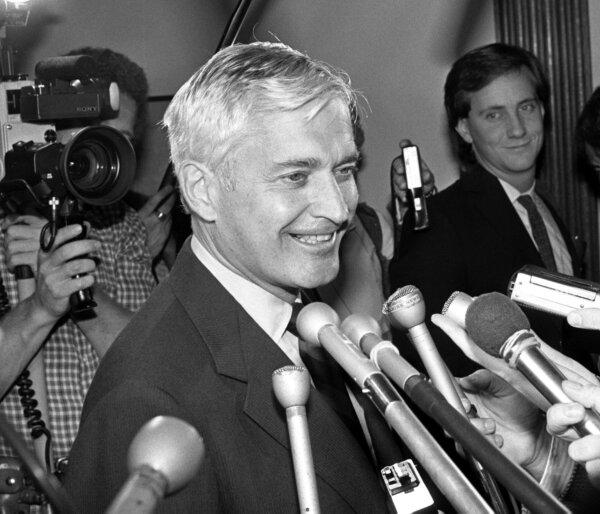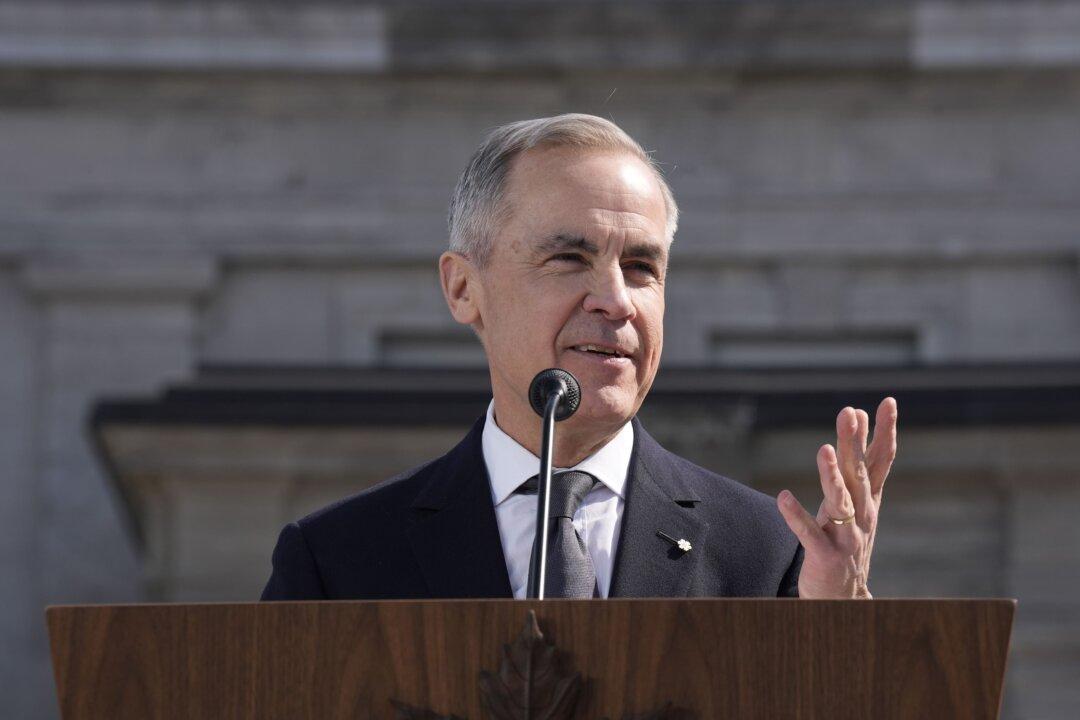Mark Carney’s ascension to prime ministership last week is unprecedented in Canadian history, as he has never previously held an elected position.
There have been a few other cases of “firsts” as well for unconventional paths to becoming head of government in Canadian history.
Mark Carney
News of Carney’s interest in the Liberal leadership had been circulating for years, but it wasn’t until January 2024 that he officially said he'd run for the top Liberal spot.What makes Carney’s leadership bid so unusual is that he had never held public office before being sworn in as Canada’s 24th prime minister on March 14. Most prime ministers had been elected by the public prior to assuming a leadership role.
Carney’s path to becoming prime minister without holding a seat in Parliament is also rare, though not unprecedented.
Carney won the Liberal leadership with 85.9 percent of the nearly 152,000 votes cast, easily beating out former Finance Minister Chrystia Freeland.
It is expected that the new prime minister will ask the Governor General to dissolve Parliament in the near future, paving the way for an election. Carney will not only be pursuing a mandate for his Liberal government but a seat in the House of Commons as an elected representative.
John Turner

Like Carney, John Turner was not a sitting MP when he won the Liberal Party leadership and became Canada’s 17th prime minister in 1984.
While Turner is best known for serving as prime minister for a mere 11 weeks—the second-shortest term in Canadian history—he had a long history as a Liberal politician.
He was elected as a Liberal MP in 1962 and was appointed to cabinet by Prime Minister Lester B. Pearson in 1965. Later, under the leadership of Pierre Trudeau, he held prominent roles as justice minister from 1968 to 1972 and as finance minister from 1972 to 1975.
Turner left politics in 1975 and returned to his former profession as a corporate lawyer.
Nine years later, Turner made a political comeback on a large scale, taking over the leadership of the party from Pierre Trudeau and being sworn in as prime minister without having a seat in the House of Commons.
The Liberals were leading in the polls at the time, and Turner decided to call an election for September that year. He ultimately lost the 1984 election in a landslide to Brian Mulroney’s Progressive Conservatives, who won the largest majority government ever accomplished at the federal level. The Liberals won just 40 seats, marking the most severe defeat for the federal Liberals since 1958.
Turner resigned as leader of the Opposition in 1990 and was replaced by Jean Chrétien. He stayed on as MP until his retirement from politics in 1993.
Before Carney, Turner was also the last prime minister to hold foreign citizenship at the time of becoming the head of government.
William Lyon Mackenzie King

William Lyon Mackenzie King held three non-consecutive terms as Liberal prime minister between 1921 and 1948 and is one of Canada’s most influential prime ministers as a wartime leader.
The October 1925 election proved the most controversial for him. That was the year the Conservative Party took the most seats in the House of Commons but fell short of majority territory.
Based on the privileges afforded to him as the incumbent prime minister until his official resignation, King declined to turn over power to the Tories but instead chose to stay in office and to meet with the House to let Parliament decide who should govern. He managed to gain the Progressive Party’s support and used that backing to stay in power as a minority Liberal government.
The Progressives’ support lasted until a scandal erupted in June 1926. Facing defeat on a no-confidence vote in the House, King approached Governor General Juian Byng seeking dissolution of Parliament and requesting a new election.
With a no-confidence vote being under debate, Byng declined King’s advice and instead asked Conservative Leader Arthur Meighen to form a government. This triggered a major constitutional crisis, known as the King-Byng Affair, pitting the powers of a prime minister against those of a governor general. In response, King resigned his post and Meighen became prime minister.
As it turned out, Meighen himself was soon defeated on a non-confidence vote, triggering an election that saw King regain the government in September 1926.
King’s rule was split into three parts, with the main gap being between 1930 and 1935 when Conservative Leader R. B. Bennett took the reins. King’s longest stint as prime minister was from 1935 to 1948, but declining health forced him to step aside.
Mackenzie Bowell

Bowell was not an MP at the time of his appointment, though he was a parliamentarian, having a seat in the Senate at the time.
The governor general appointed Bowell to take Thompson’s place, as he was the most senior cabinet minister. Bowell had been an MP continuously for 25 years, from 1867, following Confederation, to 1892, when he was named to the Senate.
Thompson appointed Bowell as the Leader of the Government in the Senate in 1892 and, recognizing his political expertise, also designated him as minister of trade and commerce, even though he was no longer a member of the House of Commons.
John Abbott

The first person to jump from the Senate to the prime minister’s seat was John Abbott. He reluctantly assumed office in 1891 after the death of Canada’s first prime minister, Sir John A. Macdonald.
Abbott supported Thompson, then the justice minister, to succeed Macdonald, but filled the role at the request of the Conservative Party, saying he would hold the position as a “caretaker.”
Macdonald had appointed Abbott to the Senate in 1887. Abbott had previously been an MP, first elected to the House of Commons in 1867, then in 1880 and again in 1881. After he was appointed prime minster, since he was directing government from the Senate rather than the House of Commons, he tasked Thompson with handling many of the day-to-day affairs.
Alexander Mackenzie

The governor general asked Mackenzie to form a new government in 1873. Mackenzie had been appointed leader of the Liberal Party, the official Opposition, earlier that year. He assumed the role of prime minister and asked the governor general to call an election for January 1874.
In that election, the Liberal Party secured a majority of the seats in the House of Commons, obtaining 40 percent of the popular vote.
Mackenzie remained in office from 1873 to 1878, when the Macdonald Conservatives regained power.
Mackenzie continued to lead the Liberals for another 19 months, but due to declining health and the risk of a party uprising, he chose to resign in favour of Edward Blake in 1880. After relinquishing his role as leader, he retained his seat in the House Commons until his death in 1892.







